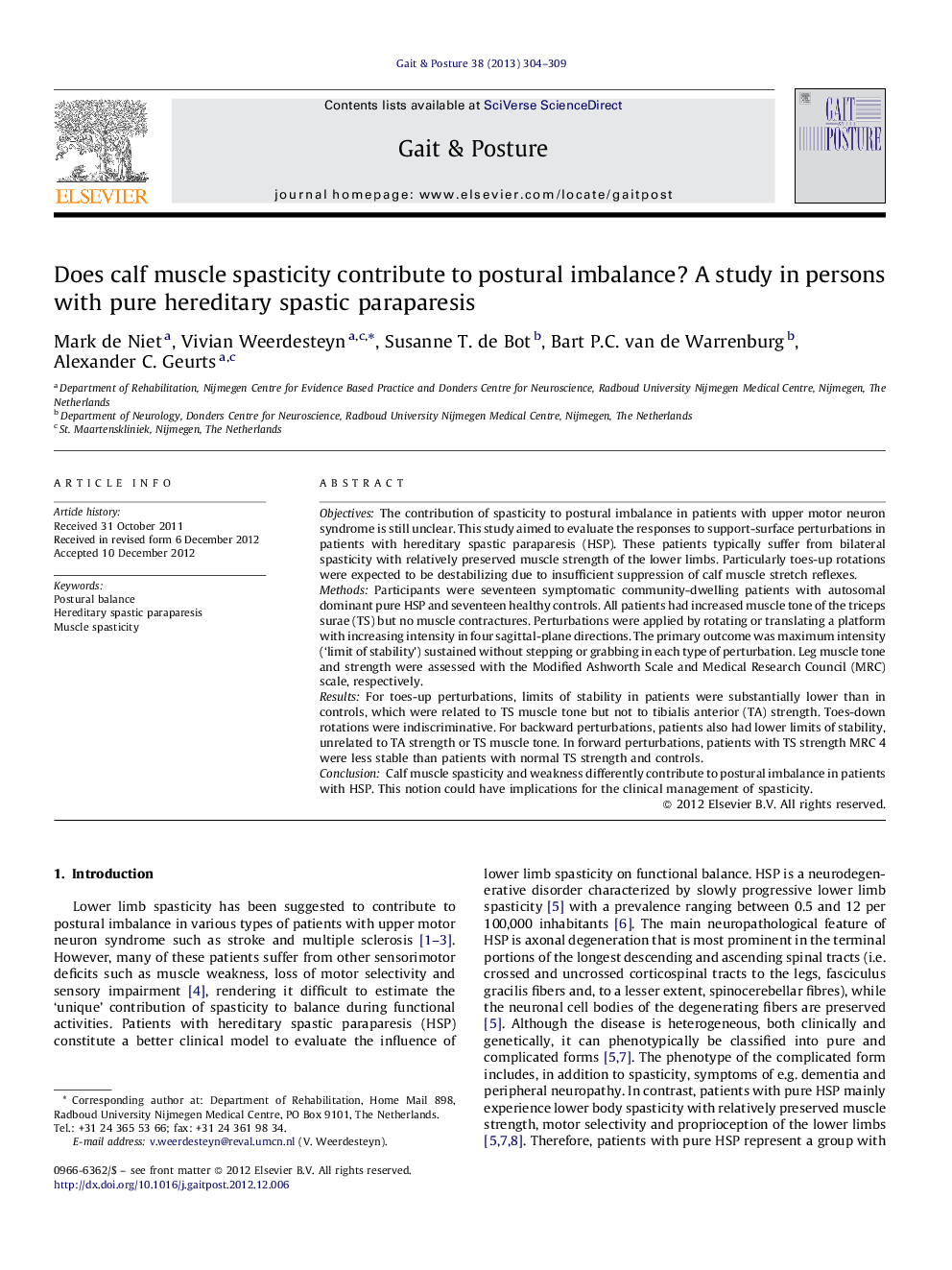| کد مقاله | کد نشریه | سال انتشار | مقاله انگلیسی | نسخه تمام متن |
|---|---|---|---|---|
| 6207364 | 1265658 | 2013 | 6 صفحه PDF | دانلود رایگان |
ObjectivesThe contribution of spasticity to postural imbalance in patients with upper motor neuron syndrome is still unclear. This study aimed to evaluate the responses to support-surface perturbations in patients with hereditary spastic paraparesis (HSP). These patients typically suffer from bilateral spasticity with relatively preserved muscle strength of the lower limbs. Particularly toes-up rotations were expected to be destabilizing due to insufficient suppression of calf muscle stretch reflexes.MethodsParticipants were seventeen symptomatic community-dwelling patients with autosomal dominant pure HSP and seventeen healthy controls. All patients had increased muscle tone of the triceps surae (TS) but no muscle contractures. Perturbations were applied by rotating or translating a platform with increasing intensity in four sagittal-plane directions. The primary outcome was maximum intensity ('limit of stability') sustained without stepping or grabbing in each type of perturbation. Leg muscle tone and strength were assessed with the Modified Ashworth Scale and Medical Research Council (MRC) scale, respectively.ResultsFor toes-up perturbations, limits of stability in patients were substantially lower than in controls, which were related to TS muscle tone but not to tibialis anterior (TA) strength. Toes-down rotations were indiscriminative. For backward perturbations, patients also had lower limits of stability, unrelated to TA strength or TS muscle tone. In forward perturbations, patients with TS strength MRC 4 were less stable than patients with normal TS strength and controls.ConclusionCalf muscle spasticity and weakness differently contribute to postural imbalance in patients with HSP. This notion could have implications for the clinical management of spasticity.
⺠We applied support-surface balance perturbations to HSP patients and controls. ⺠We identified the maximum perturbations they could sustain without stepping. ⺠Increased calf muscle tone associated with instability in toes-up perturbations. ⺠Reduced calf muscle strength associated with instability in forward perturbations. ⺠Muscle weakness and spasticity differentially contribute to postural imbalance.
Journal: Gait & Posture - Volume 38, Issue 2, June 2013, Pages 304-309
